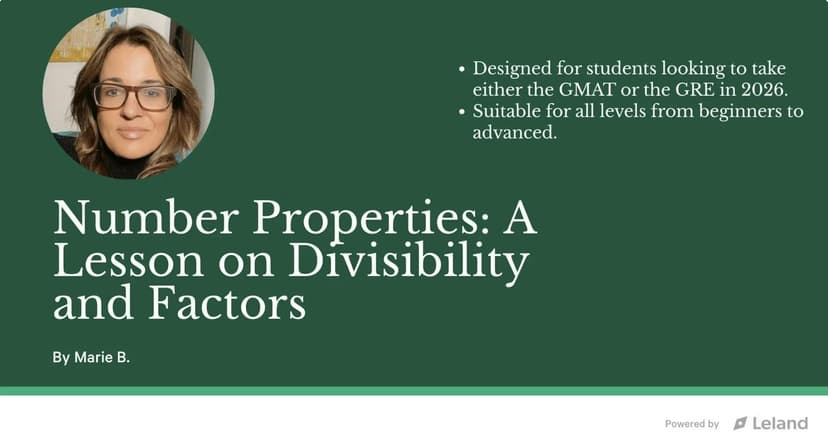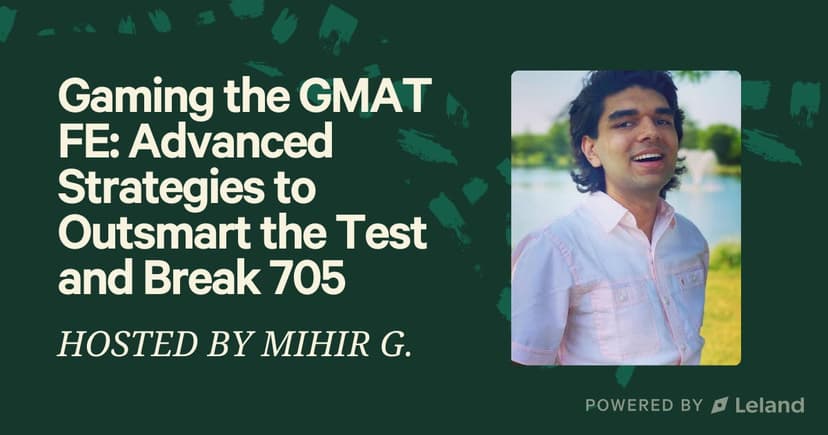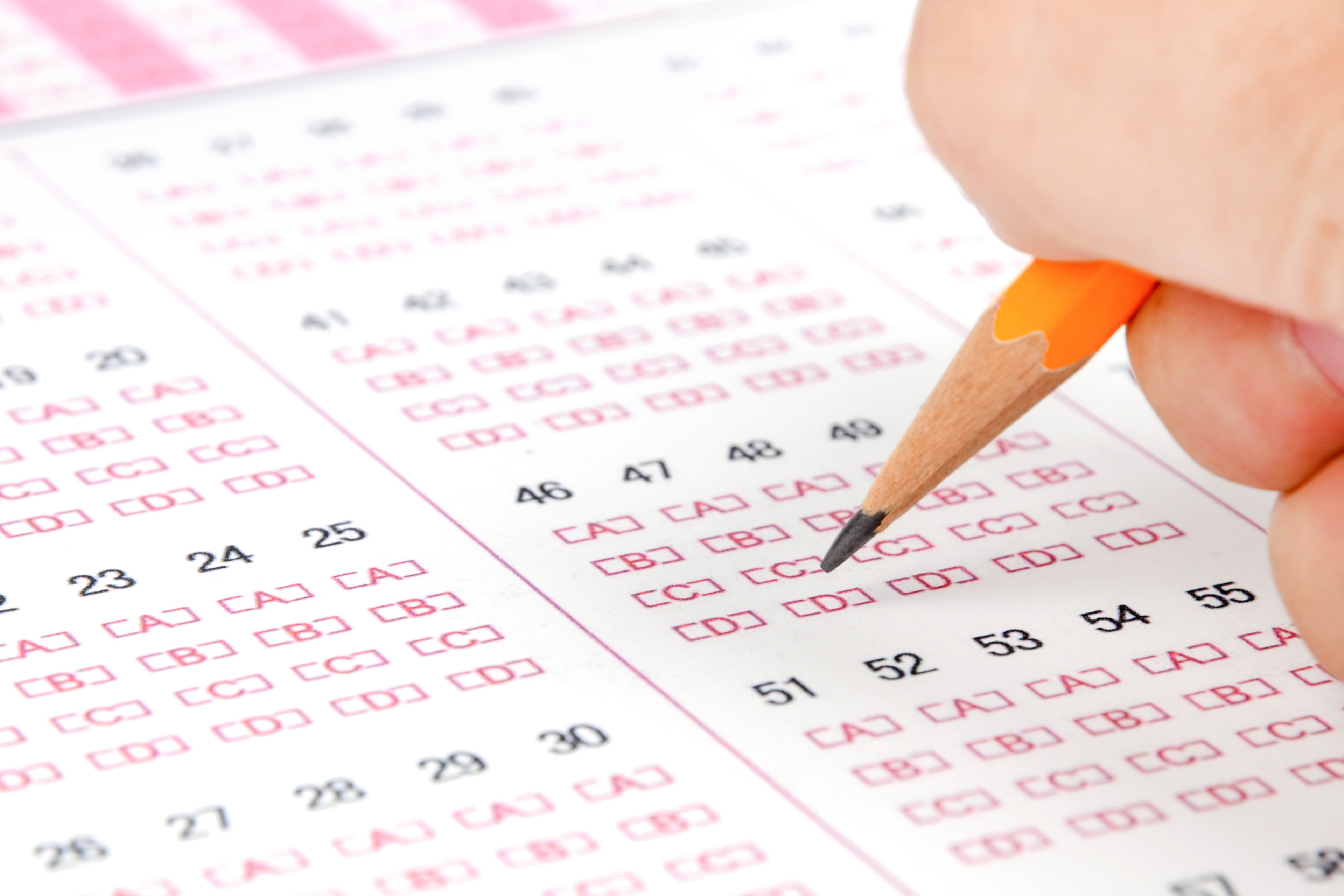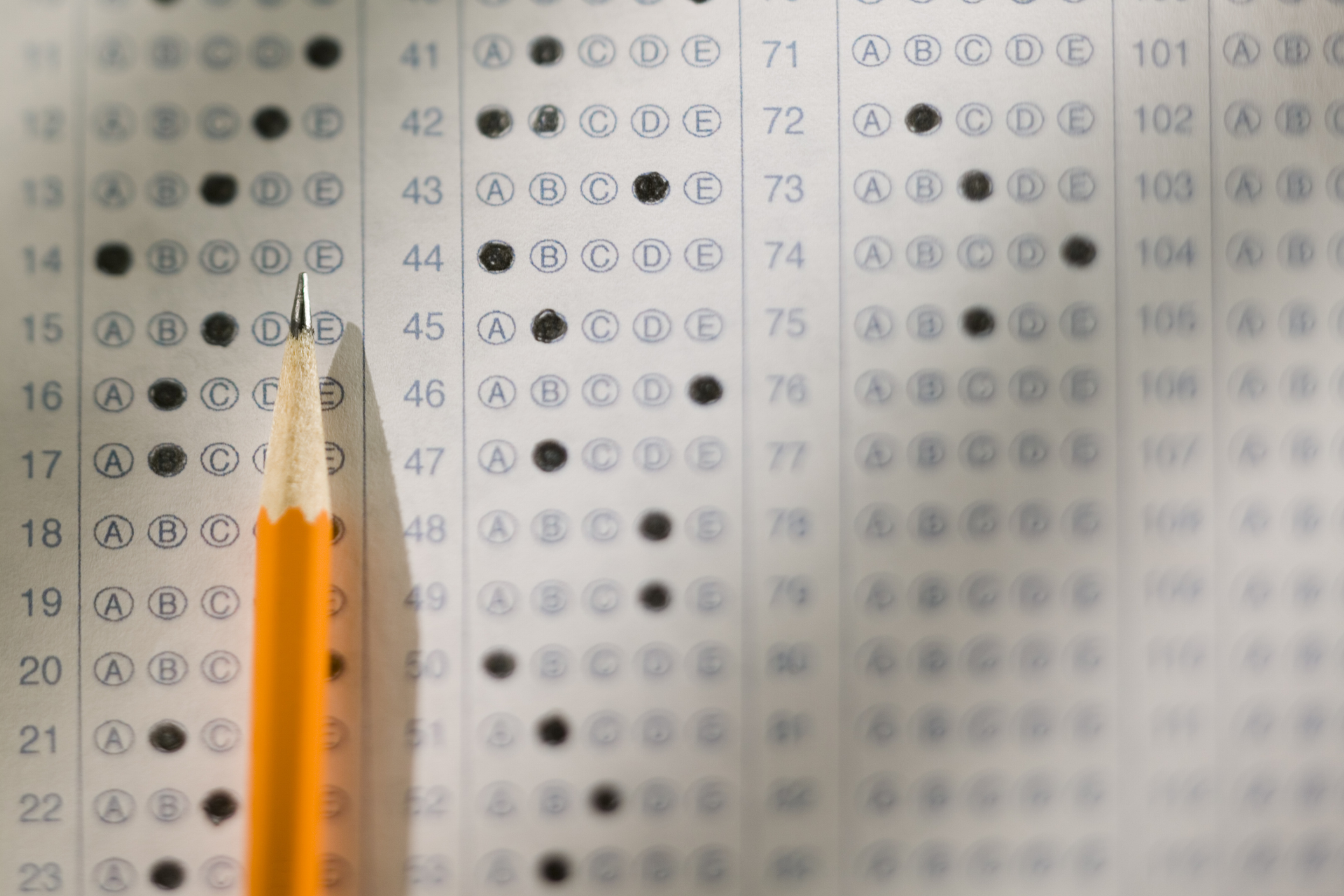
Join a free event
Learn from top coaches and industry experts in live, interactive sessions you can join for free.
Table of Contents
What Is GMAT Verbal Reasoning?
The GMAT verbal section of the GMAT Focus Edition measures reasoning, logic, and comprehension rather than vocabulary. Its purpose is to test your ability to interpret a passage, identify what a statement represents, and determine whether a conclusion follows from the evidence provided. On test day, you’ll face critical reasoning questions and reading comprehension questions, where the question asks you to evaluate arguments, eliminate incorrect answer choices, and analyze how a sentence or paragraph supports the author’s point.
Unlike the older GMAT exam, where verbal was one of three sections, the streamlined Focus Edition gives verbal greater weight in your overall test scores – meaning strong performance here has an even larger impact on your final score and how it represents your potential to top business schools.
Key Question Types
- Critical reasoning: You’ll read a short paragraph and determine whether a conclusion is supported, whether an error exists, or how new evidence might affect the argument.
- Reading comprehension: You’ll begin with a longer passage, then face comprehension questions that ask you to refer to specific lines or sentences, evaluate what the passage states, and explore broader concepts.
Both question types require students to process materials, analyze data, and eliminate weaknesses in reasoning – skills that directly impact how admissions committees make their decisions. By practicing with official resources, refining your plan, and reviewing example answer choices, you can create a calculated strategy that highlights your strengths and minimizes errors.
"Verbal is not about vocabulary. It’s about reasoning."
Expert Tip
GMAT Verbal Question Types and Topics
The GMAT verbal section challenges students with a range of question types that measure reasoning, comprehension, and clarity of thought. Each type requires a slightly different set of skills, but all emphasize your ability to analyze, evaluate arguments, and eliminate incorrect answer choices with precision.
Reading Comprehension
In this question type, you’ll read a passage from areas such as the social sciences, business, or natural sciences. The question asks you to determine the main idea, make an inference, identify the tone, or refer back to a specific line or sentence. Success comes from understanding how a paragraph or statement represents the author’s point, then producing the correct answer by eliminating errors and weaknesses in reasoning.
Example Reading Comprehension Passage: In recent years, companies have increasingly adopted flexible work arrangements, such as remote work and compressed schedules, to attract and retain top talent. Proponents argue that these policies improve productivity, reduce turnover, and support employee well-being. However, some managers remain skeptical, pointing to studies that suggest collaboration and innovation decline when employees are not physically co-located. Despite these concerns, many organizations continue to expand flexible work options, often citing cost savings from reduced office space and higher reported job satisfaction among employees.
According to the passage, which of the following best represents the author’s main conclusion?
A. Flexible work arrangements always lead to reduced collaboration and innovation.
B. Companies that adopt flexible work policies do so primarily to improve employee job satisfaction.
C. Despite skepticism, organizations are continuing to expand flexible work options.
D. Cost savings are the most important reason organizations adopt flexible work policies.
E. Managers generally oppose flexible work arrangements because they harm productivity.
Correct Answer: C
- The passage states that while there is skepticism, “many organizations continue to expand flexible work options.”
- The other options either distort the argument (A, E), overstate a single point (B, D), or misrepresent the conclusion.
Critical Reasoning
Critical reasoning questions present a short paragraph and test your ability to analyze an argument, identify assumptions, and determine whether new evidence strengthens or weakens the conclusion. You may be asked to evaluate logical flaws, recognize sufficient support, or spot where the reasoning breaks down. Here, the process mirrors real-world decision-making: reviewing materials, weighing data, and creating a clear plan to solve problems.
Example Critical Reasoning Question: A business school study found that companies offering free on-site fitness programs reported higher employee productivity than those without such programs. Based on this finding, the study’s authors concluded that providing fitness programs directly causes the increase in productivity.
Which of the following, if true, would most seriously weaken the conclusion of the argument?
Answer choices:
A. Employees at companies with fitness programs reported higher job satisfaction than employees at companies without such programs.
B. Companies that offer free fitness programs tend to have larger budgets and invest more heavily in employee training.
C. Many employees who use on-site fitness programs also maintain exercise routines outside of work.
D. Some companies without fitness programs provide other wellness benefits, such as subsidized healthy meals.
E. The productivity of employees who did not participate in fitness programs was lower than that of employees who did participate.
Correct Answer: B
- The argument assumes a direct cause-and-effect link between fitness programs and productivity.
- Choice B introduces an alternative explanation: companies with fitness programs may simply have more resources to support productivity (like training), meaning the conclusion is not sufficiently supported.
- The other answer choices either strengthen the argument (E), are neutral (A, C), or provide minor contrast without undermining causation (D).
Is RC harder than CR?
Many find RC more draining because long passages require focus, multiple read-throughs, and careful analysis of what the passage states, while others struggle more with CR’s demand to evaluate arguments, spot assumptions, and eliminate incorrect answer choices under time pressure. Some students note that practicing with tougher materials like LSAT RC passages can make GMAT RC feel easier, while others recommend drilling CR to master common question types such as strengthen, weaken, and logical flaw. Ultimately, both sections test reasoning more than memorization, and no matter your strengths and weaknesses, a smart plan – balancing stamina for RC with structured practice for CR – is the best way to improve test scores on the GMAT verbal section.
Need help structuring a study plan or shoring up your weaknesses? Work with an expert GMAT tutor to achieve your best possible score →
Topics Covered
Across all forms of verbal reasoning, the materials are drawn from diverse disciplines. You may explore passages on business, social sciences, or natural sciences, each requiring you to apply core concepts to unfamiliar content. The scale of subjects mirrors the real world, where professionals must quickly adapt to different domains, process new information, and create logical interpretations without specialized background knowledge.
Timing, Structure, and Scoring Explained
The GMAT verbal section in the GMAT Focus Edition is shorter and more calculated than in the old GMAT exam, but it carries greater weight in your overall test scores. On test day, students face critical reasoning questions and reading comprehension questions spread across a fixed number of items. With roughly 45 minutes for the section, you’ll need to manage about two minutes per question – enough time to read the passage, analyze what the statement represents, and eliminate incorrect answer choices without rushing. Success requires pacing, active reading, and the ability to quickly determine what the question asks while avoiding errors.
The scoring system uses adaptive mechanics: the verbal section is computer-adaptive at the question level, meaning the difficulty of the next question adjusts based on whether your last answer was correct. This process creates a more precise scale, where your performance on fewer questions still produces an accurate score. Because the GMAT Focus Edition has just three sections overall (Quantitative, Verbal, and Data Insights), your verbal performance represents a larger proportion of your total score compared to the older test. Strong analysis and reasoning in verbal can create a decisive advantage, improving how your results are viewed by top business schools worldwide.
GMAT Score Chart – Verbal
| Percentile Ranking | GMAT Focus Verbal Score |
|---|---|
| 100% | 89-90 |
| 99% | 87-88 |
| 98% | 86 |
| 96% | 85 |
| 91% | 84 |
| 86% | 83 |
| 79% | 82 |
| 70% | 81 |
| 60% | 80 |
| 51% | 79 |
| 42% | 78 |
| 33% | 77 |
| 25% | 76 |
| 19% | 75 |
| 14% | 74 |
| 11% | 73 |
| 8% | 72 |
| 5% | 71 |
| 4% | 70 |
| 3% | 69 |
| 2% | 67-68 |
| 1% | 61-66 |
| 0% | 60 |
For a full breakdown of GMAT Focus score percentiles, read: GMAT Focus Score Chart — With Percentiles
Essential Skills for GMAT Verbal Success
To excel on the GMAT verbal section, students need more than memorized rules: they need reasoning skills that allow them to determine what a question asks, analyze the passage, and select the best answer choices while avoiding common errors. Success comes from logical analysis, strong comprehension, and the ability to identify assumptions or weaknesses in an argument. These same skills are what top business schools look for: the capacity to read complex materials, evaluate data, and produce clear, calculated conclusions under time pressure.
- Logical reasoning and identifying assumptions: For critical reasoning questions, students must break down a short paragraph, recognize how a statement connects to the conclusion, and spot whether the evidence is sufficient. This means practicing how to strengthen, weaken, or expose flaws in reasoning, while learning to eliminate incorrect answer choices.
- Active reading for RC passages: Strong performance on reading comprehension questions comes from active reading strategies – summarizing each paragraph, noting what the passage states, and being able to quickly refer to specific lines or sentences when the question asks for detail or inference. This process improves both speed and accuracy on test day.
- Argument analysis for CR: Beyond recognizing assumptions, students must practice the full process of argument evaluation: identifying the form of reasoning, exploring alternative explanations, and determining which answer best represents the logical gap. Reviewing official materials and examples helps build this ability.
- Writing mechanics (old GMAT only): In the classic exam, sentence correction questions tested grammar, clarity, and concision. Students had to identify where a sentence contained an error and select the option that best improved the statement. While the GMAT Focus Edition removed this question type, practicing strong writing mechanics still supports essay writing and professional communication.
By developing these essential skills, students can eliminate weaknesses, strengthen their plan, and create a confident approach to the verbal section. Practicing with official resources, analyzing mistakes, and working with a tutor can help ensure that your final test scores represent your true capabilities in the admissions process.
Study Strategies and Prep Tips
A strong plan for the GMAT verbal section balances deliberate practice, timed drills, and thoughtful review. Because test scores in the GMAT Focus Edition depend heavily on verbal performance, students should treat preparation as a process of building reasoning skills, not just memorizing materials.
- Daily practice routine: Split your study time between reading comprehension and critical reasoning questions. For example, begin the day with a dense passage, write down the main idea and supporting statements, then move on to practicing 5–10 CR prompts where the question asks you to strengthen or weaken an argument. This balance ensures you sharpen both active reading and logical analysis.
- Timing drills: On test day, you’ll have about two minutes per question. Practice pacing with short sets, setting a timer, and training yourself to eliminate incorrect answer choices quickly. These drills improve your ability to stay calm under pressure and keep errors from compounding.
- Error log strategy: Create a simple spreadsheet to track every missed answer. Record the question type, what the passage states, your initial conclusion, and why your reasoning was incorrect. Over time, this process highlights weaknesses – whether in comprehension questions, logical gaps, or misreading a sentence – and helps you target review.
- Recommended study resources: The Official Guide remains the gold standard for realistic question types. Pair it with LSAT critical reasoning for harder arguments and practice extracting the concepts from dense passages. Enrolling in a GMAT Exam Prep Bootcamp or working with a GMAT tutor can be invaluable – get personalized feedback, structured study materials, and expert insights that streamline the entire GMAT application process.
By combining structured practice with high-quality resources, maintaining an error log, and investing in expert guidance, you can produce consistent results and walk into the verbal section on test day with the confidence to maximize your score.
Free study resources:
- Top 50+ Free Resources for GMAT & GRE Practice
- How to Study for the GMAT: GMAT Study Plans From an Expert GMAT Coach
- How Long Should You Actually Study for the GMAT Focus Edition?
Common Mistakes and How to Avoid Them
One of the biggest challenges on the GMAT verbal section is not just the difficulty of the question types, but the way students approach them. Many rely on intuition rather than structured analysis, or they burn time early on dense reading comprehension passages and then rush through the second half of the test. Others repeat the same errors by ignoring patterns in wrong answer choices, or they fail to recognize when a flawed process keeps producing the same mistakes. To improve your test scores, you must treat every missed question as valuable data: as a chance to determine what went wrong and eliminate weaknesses systematically.
Relying on Intuition Instead of Reasoning
The question asks you to evaluate an argument, not go with what “feels” right. Always break down the statement, identify the conclusion, and test whether the evidence is sufficient. Practicing this structure will improve accuracy across critical reasoning questions.
Spending Too Long on RC Passages
On test day, you only have about two minutes per question. Avoid rereading entire paragraphs or sentences. Instead, use active reading strategies, note what the passage states, and quickly refer back only when necessary. This helps conserve time and prevents fatigue.
Ignoring Wrong Answer Patterns
Every incorrect answer represents a learning opportunity. Keep an error log that tracks whether you misread the line, misunderstood the concepts, or confused the form of the question types. Reviewing these materials helps you refine your plan and avoid repeating the same mistakes.
Poor Time Management
Many students spend too long on the first set of questions, only to rush at the end. A calculated plan is essential: practice pacing drills, set checkpoints (e.g., where you should be at the 15- and 30-minute marks), and practice skipping or guessing strategically when a question is consuming too much time. Remember, on the adaptive verbal section, one error doesn’t ruin your score, but consistent time mismanagement can drag your performance down the scale.
Key Point on Time Management: Treat your time as carefully as your reasoning. A strong process means knowing when to invest in analysis and when to move on. By practicing pacing and reviewing mistakes systematically, you can produce more consistent results, boost your ability to handle tough passages, and walk into test day ready to maximize your score.
Need Professional Help to Ace the GMAT?
The GMAT verbal section can feel overwhelming. Between reading comprehension questions, critical reasoning questions, strict timing, and the adaptive scoring scale, many students struggle to create a structured plan on their own.
That’s where expert support makes the difference. Working with a GMAT tutor means you’ll get personalized strategies tailored to your strengths, a review process to pinpoint recurring errors, and guidance on how to manage test day pacing so you don’t burn valuable minutes on one passage or misinterpret a tricky statement. A tutor will help you refine your analysis, strengthen your ability to evaluate an argument, and maximize your test scores with targeted practice across all question types.
Whether you need help setting up a daily routine, building an error log, or learning how to eliminate incorrect answer choices, our experts provide the structure, materials, and coaching to get you from uncertainty to confidence. Kick your prep into high gear and put your best foot forward in the admissions process for top business schools worldwide.
Book a free call to get matched to your perfect tutor →
Enroll in a GMAT Prep Bootcamp →
Read more:
- 3 Things You Need to Know About the New GMAT Focus Edition
- GMAT Sections Guide: What’s Tested and How to Prepare
- How Long is the GMAT (Focus Edition)? Breakdown by Section & Total
- GMAT Focus Quant: Topics, Timing, Scores, & Tips
- The 10 Best GMAT Tutors
GMAT Verbal Section – FAQs
How many questions are there on the GMAT verbal section?
- In the GMAT Focus Edition, the verbal section has 23 questions in total, split between reading comprehension questions and critical reasoning questions. On test day, you’ll have 45 minutes, which averages to about two minutes per question—enough time to read the passage, analyze what the question asks, and select the best answer choice without rushing.
How hard is GMAT Verbal compared to Quant?
- Many students find Quant more formula-driven, while the GMAT verbal section demands more subtle skills like logical analysis, identifying assumptions in an argument, and determining what the passage states. Difficulty often depends on your educational background: strong math students may underestimate verbal, but top test scores usually require balance across both sections.
How do Reading Comprehension and Critical Reasoning differ?
- Reading comprehension tests your ability to engage with a longer passage, identify the main idea, and refer back to specific sentences when the question asks for detail or inference. Critical reasoning questions are shorter but require you to evaluate arguments, test the conclusion against the evidence, and spot logical flaws. Both question types reward structured reasoning over intuition.
What are the most common mistakes in GMAT Verbal?
- Common errors include relying on intuition instead of structured analysis, spending too much time rereading dense passages, ignoring patterns in wrong answer choices, and poor pacing that leads to rushing at the end. Successful students track mistakes in an error log, review official materials, and adjust their plan to eliminate weaknesses systematically.
Why does GMAT Verbal matter for business school admissions?
- The verbal section carries more weight in the GMAT Focus Edition because the test now has only three sections. Strong verbal scores represent your ability to read complex materials, analyze data, and communicate logically – critical skills for top business schools. A high verbal score can be the deciding point that helps you stand out in the admissions process.
How can I improve GMAT Verbal if I’m a non-native speaker?
- Non-native speakers should focus on active reading practice with challenging passages, building an error log to track recurring mistakes, and practicing critical reasoning questions to strengthen logical skills. Reviewing official materials, using free resources, and working with a Leland GMAT tutor can help streamline the process, improve comprehension, and raise your overall score on the verbal section.
Browse hundreds of expert coaches
Leland coaches have helped thousands of people achieve their goals. A dedicated mentor can make all the difference.



















